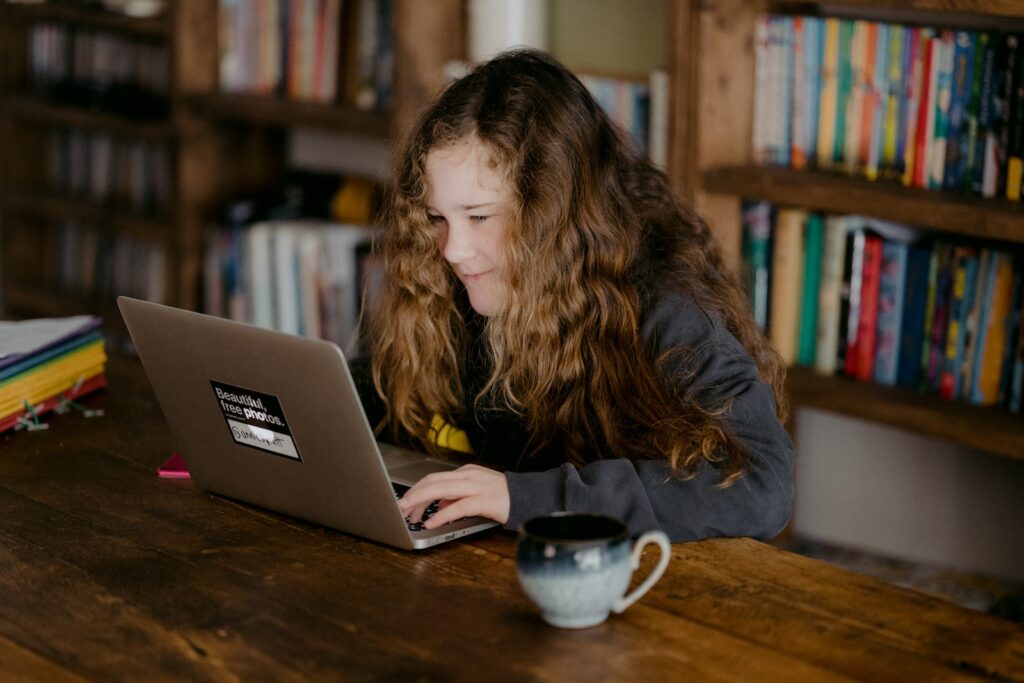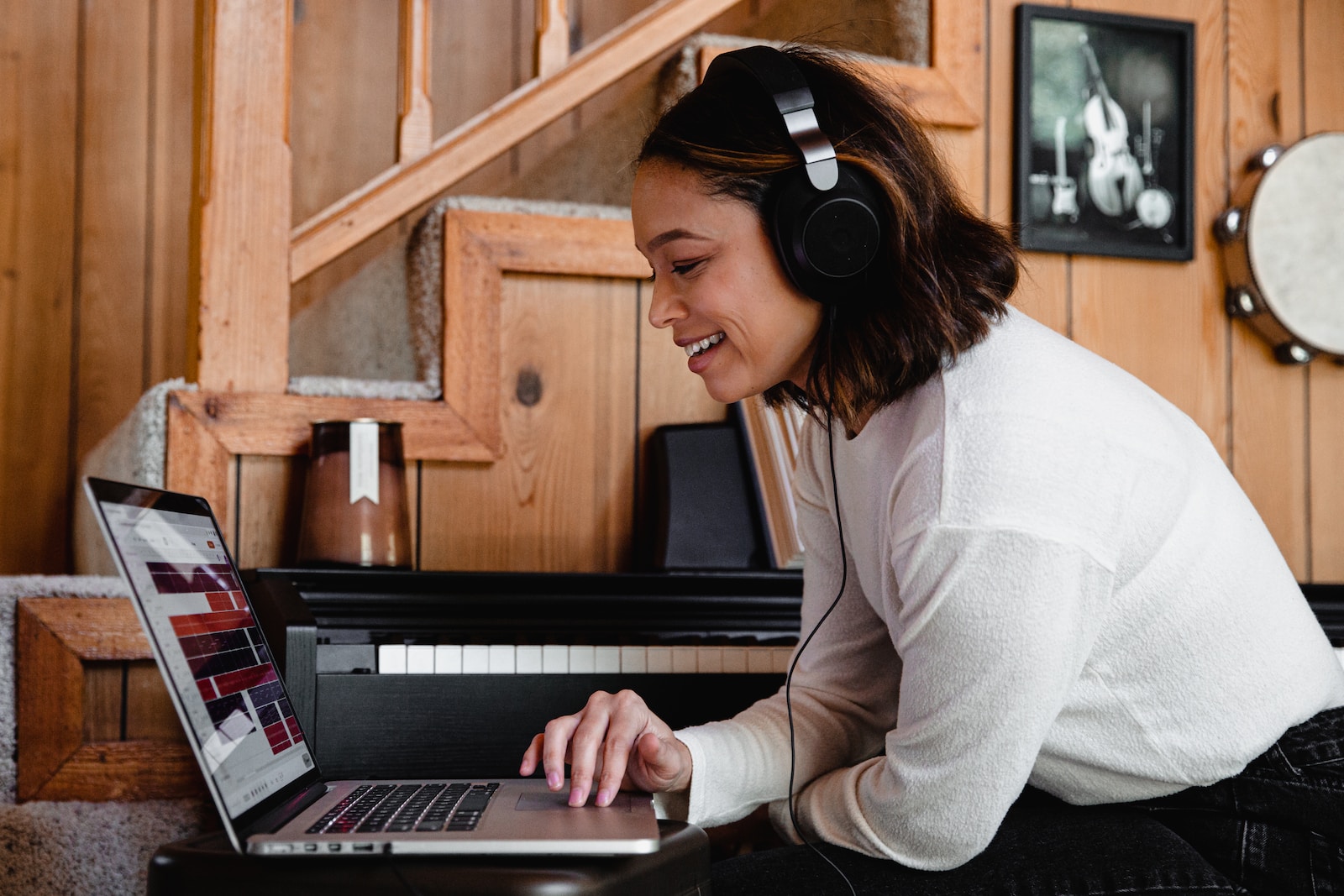Are you struggling with designing a blog that truly captures your audience’s attention? It may be time to take a closer look at the typography on your site.
Typography, or the style and appearance of text on a page, is a crucial element in creating an engaging and user-friendly design for any blog. From choosing the right fonts to considering spacing and readability, there are numerous factors that go into effective typography in blog design.
In this article, we will explore why paying attention to typography is essential for the success of your blog and provide tips on how to improve it. So sit back, grab a cup of coffee, and let’s dive into the world of typography!
Understanding Typography Basics

Typography is an essential element in blog design. Knowing how to use typography effectively can make a significant difference in the overall look and feel of your website.
Understanding the basics of typography psychology is crucial as it helps you create content that not only looks good but also communicates your message clearly.
One important aspect of typography is font pairing. Different fonts evoke different emotions, and when they are paired correctly, they can enhance the impact of your message.
For instance, using a sans-serif font for headlines and a serif font for body text creates contrast while maintaining readability. The right combination of fonts makes your blog visually appealing and easy to read.
It’s worth noting that typography isn’t just about selecting beautiful typefaces; it’s about creating an enjoyable reading experience for visitors to your site. Typography plays a key role in establishing the tone and mood of your content, which affects how readers perceive it.
Therefore, understanding typography psychology allows you to choose appropriate fonts that align with the voice and personality of your brand, ultimately enhancing user engagement on your blog.
Choosing The Right Fonts

As we have learned in the previous section, typography is an essential element of any blog design. It can make or break the overall look and feel of your website. It’s crucial to understand the basics of typography before jumping into choosing fonts for your blog.
Now that we have a solid understanding of typography fundamentals let’s move on to the next step: Choosing the Right Fonts.
One common debate among bloggers is whether to use serif or sans-serif fonts. Serif fonts are those with small lines or flourishes at the end of each stroke, while sans-serif fonts lack these embellishments. Both types of fonts have their own strengths and weaknesses, so it’s important to choose one based on what you want to convey.
Custom font selection is also critical when creating a unique brand identity for your blog. You may want to consider using custom-designed fonts as they add a personal touch and help distinguish your blog from others in your niche. However, it’s essential not to go overboard with too many different fonts since this could negatively impact readability and user experience.
Markdown list:
- Consider the tone and personality of your brand
- Choose a font that complements your content
- Ensure readability across all devices
In summary, selecting appropriate typography for your blog requires careful consideration of factors such as style, readability, and branding goals. By choosing between serif vs sans serif typefaces and exploring custom font options, you can create a cohesive visual language that elevates your content and draws readers in.
Remember always to keep user experience top-of-mind by ensuring legibility across all devices and platforms – happy designing!
Importance Of Font Size And Spacing

Font size and spacing are key components of typography that can make or break a blog design.
Font readability is especially important – if it’s too small, visitors may struggle to read.
Line spacing is also key – too much or too little can make the text hard to digest.
On the other hand, letter spacing can give text a sense of balance, making it easier to read.
All in all, font size and spacing are two essential elements of typography that can’t be overlooked when it comes to blog design.
Font Readability
As you browse through various blogs and websites, have you ever come across a post that was hard to read due to the font used? Maybe it was too small or cramped together, making it difficult for your eyes to follow along.
This is where font readability comes into play – an essential aspect of typography in blog design. Font size and spacing are two key elements that contribute to the overall readability of a blog’s content.
A proper font hierarchy should be established, with headers being larger than body text but not so large as to overpower the rest of the page. It’s also important to consider line spacing – if lines are too close together, readers may struggle to differentiate between them.
Another factor that can affect font readability is font pairing. When choosing fonts for your blog design, it’s crucial to select complementary ones that work well together. Pairing fonts from different families (such as serif and sans-serif) can help create visual contrast while still maintaining legibility.
However, going overboard with multiple typefaces can quickly become overwhelming and detract from the main message you’re trying to convey.
Overall, when designing a blog or website, paying attention to font readability is critical for ensuring that your audience has a pleasant reading experience. By establishing a clear font hierarchy, adequate spacing, and thoughtful font pairing choices, you can make sure that your content is both easy on the eyes and engaging for viewers.
Line Spacing
Now that we’ve discussed the importance of font size and font pairing in typography for blog design, let’s dive into another crucial aspect – line spacing.
In typography for branding, mobile design, and web content creation, adequate line spacing is essential to ensure legibility and readability.
Line spacing refers to the vertical space between lines of text. When there isn’t enough space between lines, it can be difficult for readers to differentiate words and sentences from one another. This can lead to eye strain, confusion, and a negative reading experience overall.
On the other hand, when there is too much space between lines of text, it can make your content look sparse or disjointed. Finding the right balance of line spacing will help keep your readers engaged with your content while also ensuring they can easily read each word.
In conclusion, paying attention to line spacing is just as important as considering font size and pairing when designing a blog or website. Adequate line spacing ensures that your audience has an enjoyable reading experience that keeps them coming back for more.
So always remember: proper line spacing makes all the difference!
Letter Spacing
Now that we’ve covered the importance of font size and line spacing in typography for blog design, it’s time to dive into another crucial aspect: letter spacing.
As with all typography trends, adjusting kerning can have a significant impact on the readability and overall aesthetic of your content.
Letter spacing refers to the amount of space between each character in a word. When there isn’t enough space between letters, they can appear cramped and difficult to read. Conversely, too much space between characters can make words look disjointed or even illegible.
Finding the right balance of letter spacing is essential for ensuring that your text is both legible and visually appealing.
By paying attention to this often-overlooked aspect of typography, you can create content that keeps your audience engaged while also reflecting your brand’s unique style and voice.
So don’t overlook the power of proper letter spacing when designing your next blog or website!
Enhancing Readability With Contrast And Alignment

When it comes to blog design, typography plays a crucial role in enhancing readability. However, did you know that typography can also evoke emotions? The right font choice and contrast can make your content more engaging and impactful.
One way to enhance the emotional impact of your typography is through color contrast. When selecting colors for your text and background, consider using contrasting hues to create visual interest. For example, if your background is light, use dark-colored text to make it stand out. This not only improves legibility but also adds an element of drama to your content.
Another way to enhance the emotional response of your typography is through alignment. Proper alignment creates structure and hierarchy within your content while making it easier on the eyes. A well-aligned layout helps guide readers’ attention and reinforces the message you’re trying to convey. Just remember to keep things consistent throughout your design – from heading sizes down to line spacing – as this will help maintain coherence across all pages or posts.
Incorporating these tips into your blog design can take some practice but ultimately pays off with a superior reading experience for your audience. By leveraging color contrast and proper alignment techniques, you’ll be able to engage readers on an emotional level while also improving their ability to digest information quickly and efficiently.
Using Hierarchy For Better Organization

Now that we’ve covered the importance of enhancing readability with contrast and alignment, let’s move on to another crucial aspect in blog design: using hierarchy for better organization.
Hierarchy refers to the arrangement of elements in a visual design according to their level of importance or significance. This principle plays an essential role in guiding readers’ attention towards key information, making it easier for them to navigate your content.
When it comes to typography for mobile devices, hierarchy becomes even more critical. With limited screen real estate available on smartphones and tablets, designers must be strategic about how they use fonts and colors to create a clear visual hierarchy.
For instance, larger font sizes can indicate headings or important pieces of information while smaller text is reserved for less significant details. Similarly, color can also impact hierarchy – bold or bright hues tend to draw the eye first, so using these sparingly can help you direct readers’ focus where you want it.
One way to establish strong visual hierarchy is by utilizing typographic contrasts such as size, weight, and style variations within your typeface choices. Bold headlines paired with lighter body copy will immediately distinguish between different levels of information and make the content more scannable.
Additionally, choosing a legible typeface that prioritizes readability over aesthetics is especially crucial when designing for mobile devices since small text can become blurry or difficult to read on screens. By following these principles, you’ll ensure that your blog not only looks great but also delivers a seamless reading experience across all devices.
Incorporating Visual Elements

Color palettes are a major factor to consider when it comes to blog design; they should be chosen carefully to ensure a cohesive look and feel.
Fonts are also essential to consider; they should be chosen to reflect the personality of your blog and be easy to read.
Text sizing is also important; you should use sizes that are appropriate for the context and create a visual hierarchy.
Ultimately, the right combination of visual elements can make a blog look professional and attractive.
Color Palettes
When it comes to blog design, typography is crucial in establishing a brand’s identity and conveying its message effectively. However, the importance of color palettes should not be overlooked as well.
Just like font choices, colors have psychological effects that can evoke certain emotions or feelings from viewers. For instance, blue hues are often associated with trustworthiness and professionalism, making them ideal for corporate blogs or websites. Meanwhile, warm shades such as reds and oranges create a sense of urgency or excitement – perfect for e-commerce sites looking to encourage purchases.
By understanding the psychology of color in typography, bloggers can select appropriate shades that align with their content and goals. Moreover, choosing complementary colors that match the overall aesthetic of the blog can enhance its visual appeal even further.
This creates a cohesive look throughout all pages and elements on the site. Consistency in typography and branding strengthens recognition among audiences which leads to higher engagement rates. Therefore, incorporating an effective color palette into one’s blog design strategy is just as important as selecting suitable fonts and layouts.
Fonts And Text Sizing
Now that we’ve established the importance of color palettes in blog design, let’s move on to another visual element that plays a crucial role – fonts and text sizing.
Choosing suitable typography is not just about selecting pretty letters; it also affects readability and user experience.
To create an effective typography hierarchy, bloggers need to consider font pairing techniques.
This involves selecting two or more complementary typefaces that work well together and convey the brand’s personality effectively.
For instance, combining a serif font with a sans-serif one can create contrast while maintaining harmony between different elements on the page.
In addition to font pairing, text sizing is another aspect of typography that requires careful consideration.
A good rule of thumb is to use larger fonts for headlines and subheadings while using smaller ones for body text.
However, this may vary depending on the overall aesthetic of the blog and its target audience.
By experimenting with different sizes and styles, bloggers can find the perfect balance between legibility and aesthetics.
Testing And Refining Your Typography

Now that you have a solid understanding of typography and its importance in blog design, it’s time to put your knowledge into practice.
The best way to do this is by testing and refining your typography until it’s perfect for your specific audience.
To begin, start experimenting with different typography tools such as Google Fonts or Typekit. These tools allow you to browse through various font options and choose the one that best represents your brand voice and complements your content.
Additionally, consider the impact of color on your typography choices. Each color has its own psychological effect, so be sure to select colors that align with the mood and tone of your blog posts.
Once you’ve selected your fonts and colors, test them out on different devices and screens to ensure they look consistent across all platforms. This step is crucial because readers can access your blog from a variety of devices, including desktop computers, tablets, and smartphones.
By testing and refining your typography, you’ll create a seamless reading experience for all users who visit your site.
Key Takeaways
- Typography is a crucial element in blog design, impacting the overall look and feel of the website.
- Understanding typography basics and psychology helps create content that looks good and communicates effectively.
- Font pairing and selection play a role in creating contrast, readability, and brand identity.
- Font size, line spacing, and letter spacing affect font readability and the overall reading experience.
- Color contrast and alignment enhance the emotional impact and readability of typography.
- Hierarchy in typography helps organize information and guide readers’ attention.
- Visual elements like color palettes and font choices contribute to the aesthetic appeal and brand identity of a blog.
- Testing and refining typography is essential to ensure consistency and a seamless reading experience.
Final Thoughts
In conclusion, typography plays a crucial role in blog design and can greatly impact the overall user experience.
By understanding the basics of typography, choosing the right fonts, adjusting font size and spacing, enhancing readability with contrast and alignment, using hierarchy for better organization, incorporating visual elements, and testing and refining your typography, you can create a visually appealing and easy-to-read blog.
For example, let’s consider a hypothetical case study of two blogs: one with poor typography choices and another with well-thought-out typography.
The poorly designed blog uses a small font size that is difficult to read on certain devices. Additionally, all text is written in bold which makes it hard to distinguish important information from regular content.
On the other hand, the well-designed blog has chosen an appropriate font size with ample spacing between lines to make reading comfortable. The designer also used contrasting colors to highlight important information and organized content through proper use of hierarchy.
As a content writer or copywriter who understands typography in blog design, you have the ability to create engaging content that is both aesthetically pleasing and easily readable for your audience.
With careful consideration of every aspect of typography within your design process, you’ll be able to provide readers with an enjoyable experience while keeping them engaged in what you have to say.

